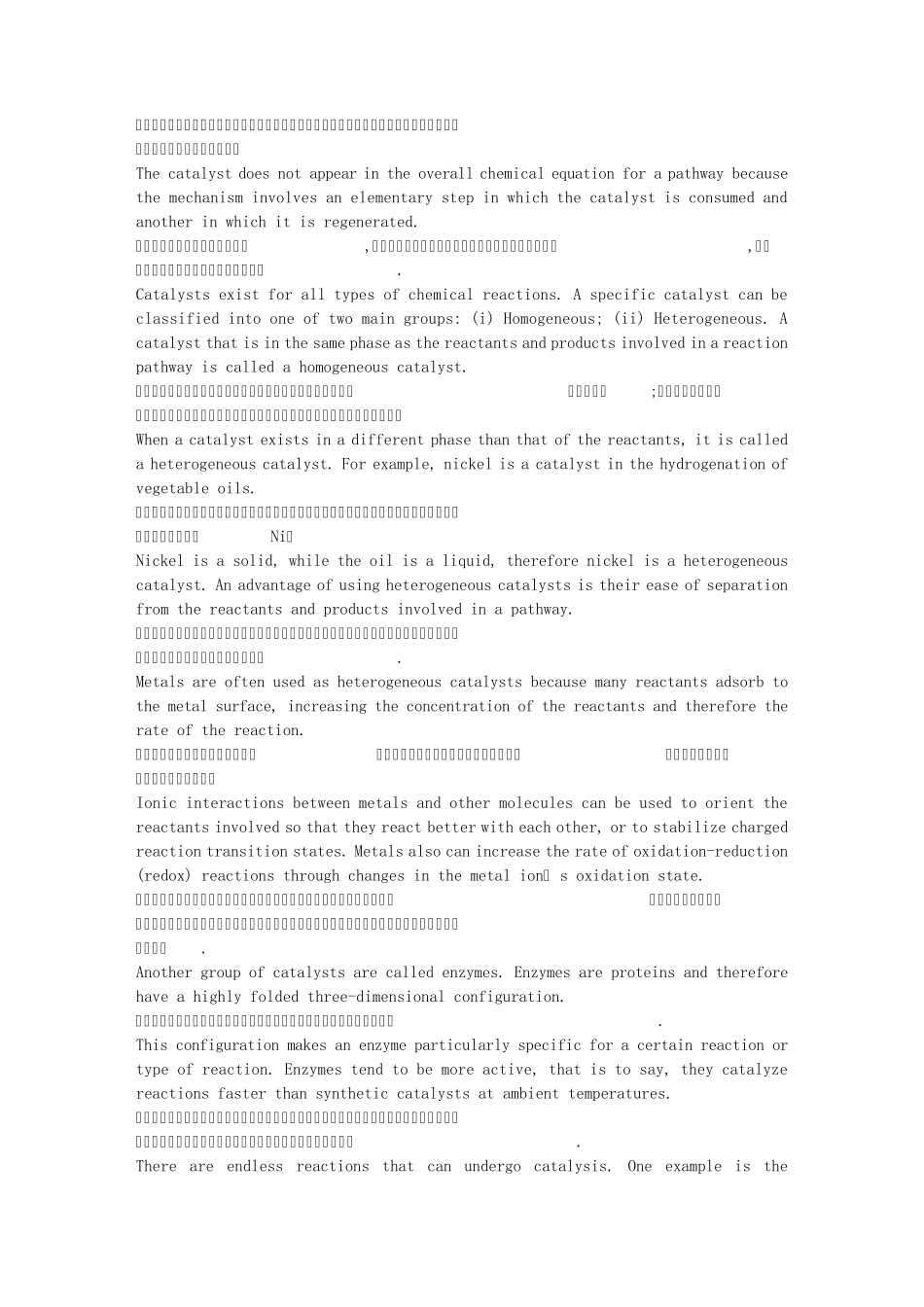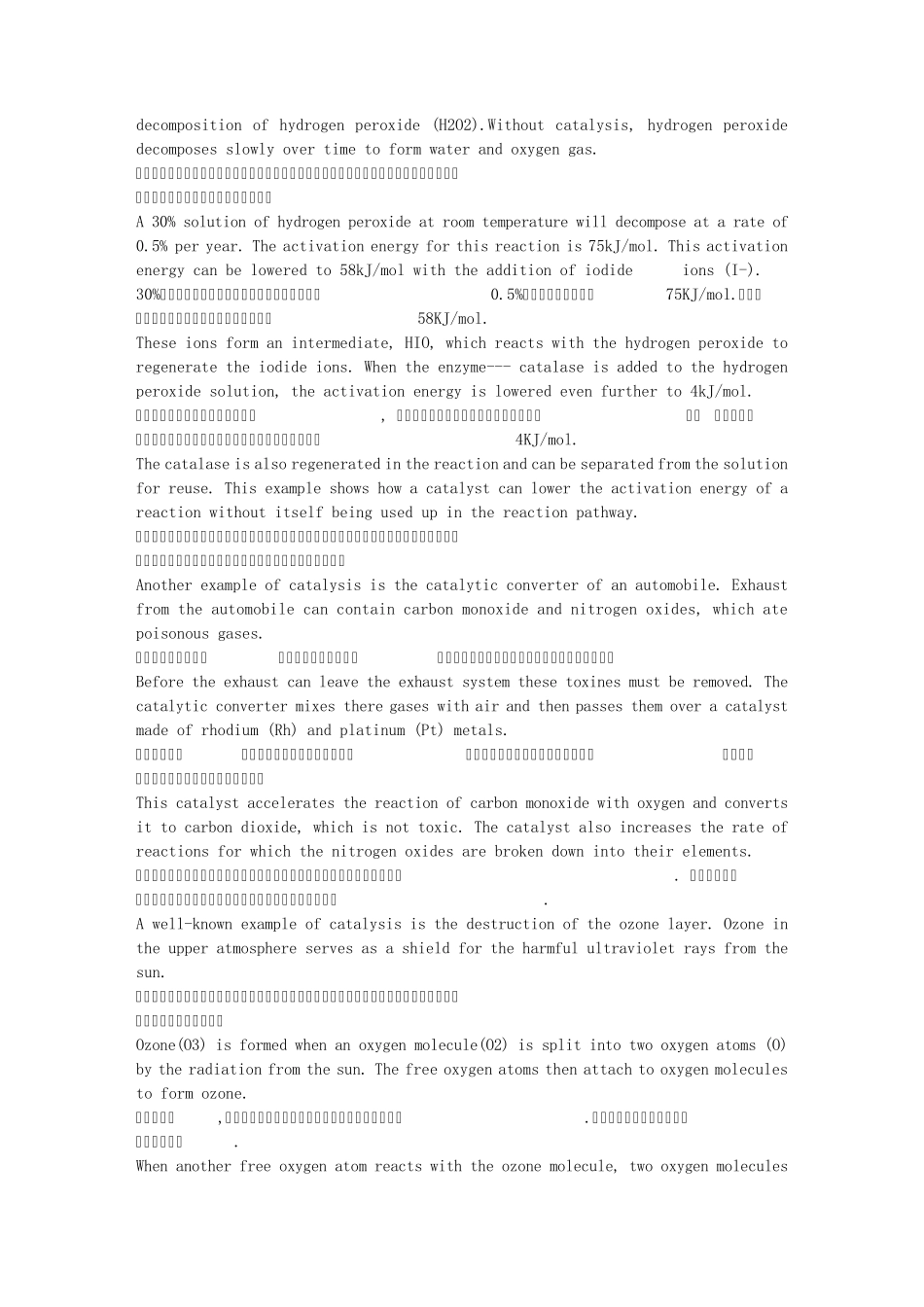Catalyst and Catalysis 催化剂与催化作用 A catalyst increases the rate of a particular reaction without itself being used up. A catalyst can be added to a reaction and then be recovered and reused after the reaction occurs. 催化剂可以提高特定反应速率而自身却不会被消耗掉。催化剂可以被添加到反应中,在反应发生后可再回收再利用。 The process or action by which a catalyst increases the reaction rate is called catalysis. The study of reaction rates and how they change when manipulated experimentally is called kinetics. 催化剂可以提高反应速度, 这一过程称为催化作用。研究反应速率以及它们如何在实验中控制反应的速率被称之为动力学。 Most chemical reaction occur as a series of steps. This series of steps is called a pathway or mechanism. Each individual step is called an elementary step. The slowest elementary step in a pathway determines the reaction rate. 大多数化学反应都是由一系列的反应步骤所构成。这一系列反应步骤称为反应途径或反应机理。每个单独的反应步骤称为一个基元反应步骤。最慢的一个基元反应步骤觉定了整个反应速率。 The reaction rate is the rate at which reactants disappear and products appear in a chemical reaction, or more specifically, the change in concentration of reactants and products in a certain amount of time. 反应速率就是指在化学反应中反应物消耗和产物生成的速率,或更具体地说,是在一定的时间内反应物和产物的浓度的变化. While going through a reaction pathway, reactants enter a transitional state where they are no longer reactants, but are not yet products. During this transitional state they from what is called an activated complex. 连续循环反应中,反应物首先生成过渡状态产物,这时它们不再是反应物,但也不是产物。过渡产物被称之为活化化合物。 The activated complex is short-live and has partial bonding characteristics of both reactants and products. The energy required to reac...


